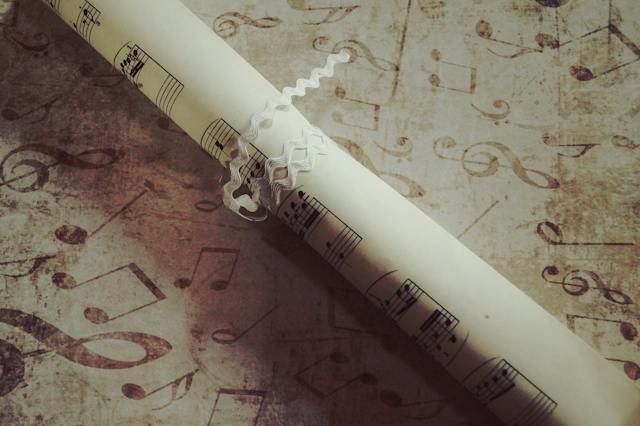What are the Diabelli Variations?
The Diabelli Variations, also called Op.120, are 33 short pieces Beethoven composed, based on a waltz tune written by Anton Diabelli.
Diabelli invited a number of composers in Vienna and the Austrian Empire to write variations on his theme for solo piano, that he would publish in Vaterländischer Künstlerverein, in two parts.
Part 1 was made up of Beethoven’s masterpiece, and part 2 was comprised of 50 individual variations by 50 composers. Carl Czerny, Franz Schubert and even Franz Liszt, age 11 at the time, were amongst those who contributed to this thrilling anthology.
Who was Anton Diabelli?
Anton Diabelli was an Austrian composer, music publisher and respected music teacher. Prior to establishing a music business of his own, he worked as a proofreader for Steiner & Co., during which time he became trusted and well-liked by Beethoven.
His firm, Cappi & Diabelli, later Diabelli & Co. began by producing popular songs and arrangements for amateurs to play at home. Later, he printed numerous works by Schubert, including the first ever publication of his music, Op.1, or ‘Erlkönig’.
|Related: The history of music printing and publishing
What was Diabelli’s motivation behind the Variations invitation?
Diabelli’s reason for reaching out to famous composers in and around Vienna was for promotional purposes; the project was aimed at advertising his publishing business. But there was more to it: Diabelli’s proposal to the group of composers was also motivated by a patriotic sentiment. Furthermore, the profits were to be used to support widows and orphans of the Napoleonic Wars.
When did Beethoven compose the Diabelli Variations?
Coming to the end of a number of challenging years in terms legal struggles for guardianship of his nephew Karl, and reduced productivity in his work, the Variations project suited Beethoven well. Also in poor health at this time, it enabled the composer to work in bursts of inspired improvisation, allowing him to rework and polish the pieces with a great degree of flexibility. Beethoven was on the cusp of his third great productive period.
In the year of 1819, Beethoven completed 22 variations. Then he paused and began work on other pieces such as Missa solemnis, and the last three piano sonatas. Finally, in 1823, he composed an additional 11 variations to the Diabelli theme. The German publication of the Variations was dedicated to Antonie Brentano, close friend to Beethoven.
Beethoven chose to name the works using the German ‘Veränderungen’, however, all other musical terms used throughout were written in Italian. Veränderungen means both ‘variations’ and ‘transformations’. It has been suggested that in this way, Beethoven sought to express that the 33 variations he composed stood out from previous works of this nature.
Why did Beethoven write 33 variations on the Diabelli waltz?
Considering that the original proposal was to write one variation, what led Beethoven to create such a large set of pieces? It is possible that he was acting upon inspiration from a year earlier, when his piano student, Archduke Rudolf, wrote a total of 40 variations on a tune written by Beethoven himself.
There are a number of theories as to why the composer chose to write 33 variations. Perhaps he had been attempting to outdo himself following the 32 Variations in C Minor he wrote in 1806. Or had he set out to surpass the great Goldberg Variations by Bach which consist of 32 pieces?
How long are the Diabelli Variations by Beethoven altogether?
It takes approximately one hour to listen to the full set of variations.
What are the Diabelli Variations like?
The majority of pieces are in C Major, except for numbers 29-31, which are in C Minor. The penultimate piece is in E♭ major. These key changes towards the end of the set of variations add dramatic effect; also, within every piece, Beethoven uses maximum harmonic contrast.
The pieces include humour in the form of references: In Variation 22, he quotes from the opera Don Giovanni by Mozart, where Leporello, Don Giovanni’s servant moans about having to work night and day. Variation 23 is a parody of a Cramer finger exercise.
Pieces 24 and 32 are fugues that show a clear appreciation of Bach, whilst number 31 is in itself a reference to the Goldberg Variations.
How were the Diabelli Variations received by Beethoven’s peers?
At the time of publication, Anton Diabelli stated that the Variations were ‘a great and important masterpiece worthy to be ranked with the imperishable creations of the Classics’ and that they deserved ‘a place beside Sebastian Bach’s masterpiece in the same form’, here referring to the Goldberg Variations.
This is generally how it is regarded to this day. It is also true, however, that these pieces share the character of Beethoven’s other late compositions, in their great length and complexity, making them challenging to play. As a result, the Diabelli Variations have been performed less frequently, and are generally, less well understood.
A.K.




